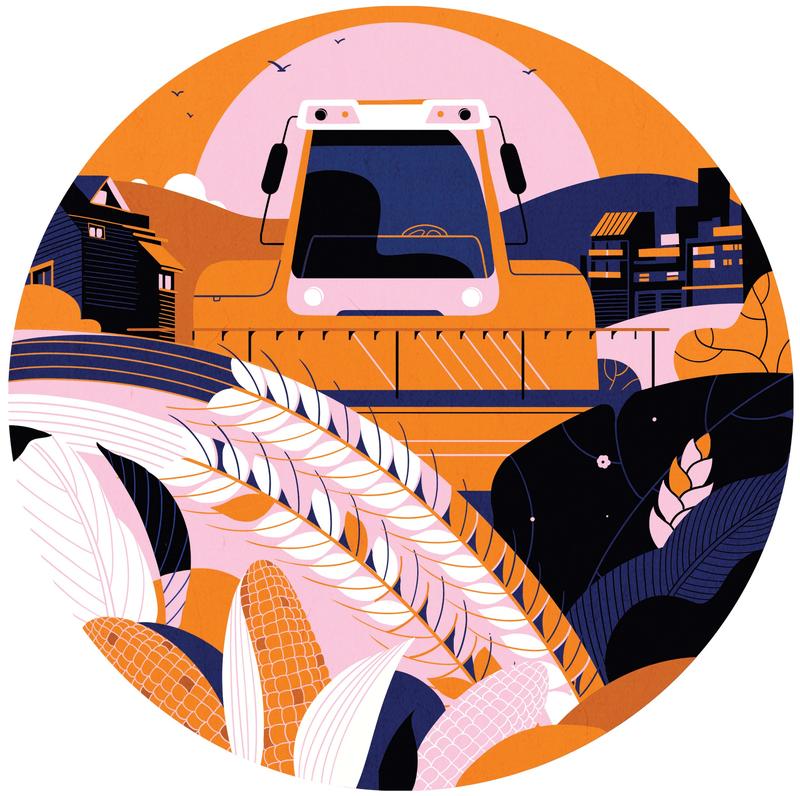 (SONG CHEN / CHINA DAILY)
(SONG CHEN / CHINA DAILY)
Since its launch, the Belt and Road Initiative has significantly promoted agricultural cooperation between China and other countries and regions involved in the initiative, enhanced their agricultural development and helped strengthen global food security.
But amid the COVID-19 pandemic and the Russia-Ukraine conflict, the global food supply and demand structure have become seriously unbalanced, food prices have repeatedly hit new highs, and global food security risks are rising.
By promoting local agricultural development in participating countries, the BRI is playing an important role in sustaining the trade in food and promoting food security.
The BRI has made remarkable achievements in promoting agricultural cooperation. By the end of 2021, China had signed 205 cooperation documents on the joint construction of the initiative with 171 countries and international organizations, along with agricultural and fishery cooperation agreements with 86 countries.
With over half of these countries, stable agricultural cooperation mechanisms have been established. More than 820 agricultural projects have begun under the framework of the BRI and investment has exceeded $17 billion.
China also has extensive cooperation with countries participating in the initiative in agricultural trade, technologies cooperation and talent exchanges. In 2020 alone, the total agricultural trade between China and other Belt and Road countries reached $95.79 billion.
China’s agricultural cooperation with other Belt and Road countries has significantly expanded the scale of their agricultural trade and boosted their agricultural production. The volume now accounts for more than one-third of China’s total agricultural trade. In 2021, China’s agricultural product imports from Belt and Road nations hit 326.55 billion yuan ($48.59 billion), a year-on-year rise of 26.1 percent.
Agricultural cooperation between China and countries involved in the BRI has also significantly contributed to an increase in agricultural output. By the end of 2021, China had sent nearly 1,100 agricultural experts and technicians to more than 40 countries and regions around the world, accounting for 47 percent of the number of the Food and Agriculture Organization South-South cooperation countries and 60 percent of the total number of FAO South-South cooperation personnel.
Most of them were sent to Belt and Road countries, promoting the development of agricultural production in those countries.
Agricultural assistance to Belt and Road countries has effectively improved the stability of regional food production and the ability to resist risks. By building agricultural cooperation and exchange platforms and providing agricultural technology and materials, China has helped enhance the ability of Belt and Road countries to resist natural disasters and produce stable and high yields.
By the end of 2021, Chinese experts had popularized over 1,000 agricultural technologies in crop production, husbandry and aquaculture, farmland water conservancy and agricultural product processing in Belt and Road countries, driving an average increase in crop production of between 30 and 60 percent in the project areas.
Chinese investment in agriculture in the Belt and Road countries has boosted employment and alleviated poverty, empowering poor people in the regions to deal with fragmented access to food and related crises. The World Bank predicts that by 2030, the BRI will help 7.6 million people around the world get out of extreme poverty and 32 million people out of moderate poverty.
Amid the big shocks to global food security caused by the pandemic and the Russia-Ukraine conflict, China and other Belt and Road countries should join hands to cope with the food crisis, ease the food security challenges and promote global food security. Specific focus should be given to the following aspects.
First, trade in agricultural products and agricultural investment tie-ups among Belt and Road nations should be further developed.
Cooperation in agricultural research, production, processing, logistics, warehousing and sales should be strengthened to facilitate agricultural trade and enlarge the trade volume. Exchanges to develop modern agriculture and improve agricultural quality and efficiency should be promoted to cushion the impact of the food security crisis. The Silk Road Fund, the Asian Infrastructure Investment Bank and other specialized investment entities of the BRI should continue to expand agricultural investment in related regions.
Second, China should increase its food aid to the Belt and Road countries in need. China always insists on seeking common development and helping other nations overcome their food difficulties.
For example, in September 2021, the Chinese government announced it would provide Afghanistan with food, winter supplies, vaccines, medicines and other emergency humanitarian aid with total value of 200 million yuan. The fifth batch of food aid was distributed to needy people in Afghanistan on April 23 and 6,220 metric tons of food aid has been completed so far. Similar food aid has become a normal part of China’s work across the BRI.
Third, the building of a community of interests among the Belt and Road countries needs to be accelerated. Greater efforts are needed to increase investment efficiency, so that local economic development and people’s livelihoods can be improved, and the goals of high standards and sustainability are pursued to help countries better deal with food security risks.
Li Chunding is a professor at the School of Economics and Management at China Agricultural University and the executive vice-dean of the Belt and Road International Agricultural Products Circulation Innovation Institute. Li Donglin is a doctoral student at the same school. The authors contributed this article to China Watch, a think tank powered by China Daily.
The views do not necessarily reflect those of China Daily.


